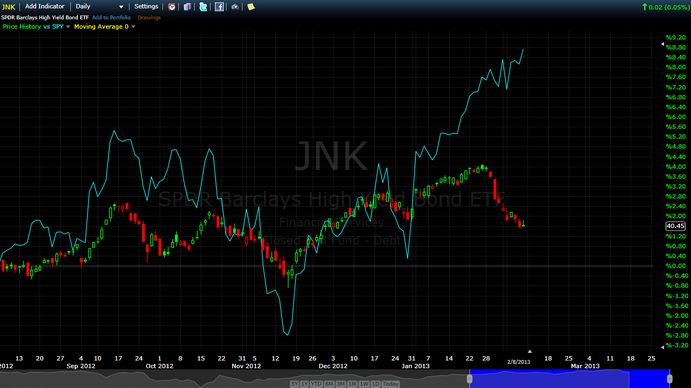By: Jose Torres, Interactive Brokers’ Senior Economist
Following the restructuring of First Republic Bank, investors are looking ahead to an eventful week featuring a pivotal Federal Reserve meeting, earnings from large-cap companies including Apple, and market-moving economic data not limited to Payrolls and the Job Openings and Labor Turnover report. While equity markets are sluggish, this morning’s Institute for Supply Management (ISM) shows that pricing is rising for manufacturers, which is pushing bond yields up.
The ISM’s Manufacturing Purchasing Managers’ Index (PMI) for April was 47.1, exceeding expectations for 46.8 and higher than March’s 46.3. With S&P Global’s competing Index recently climbing slightly above expansion territory to 50.2 and the ISM below the expansion-contraction threshold of 50, a rapid uptick in prices is the most concerning aspect within today’s report. The prices component expanded at a rate of 53.2, reversing March’s 49.2 level of contraction. Employment also recovered from March’s 46.9 contraction level, expanding at a more modest level of 50.2. Looking forward to this week’s Payroll and next week’s Consumer Price Index reports, today’s data points to high temperatures for both releases.
Equities Gain Modestly
Equity investors appear unconcerned about the week, modestly adding to the aggregate gains of the last four months. The old-school adage “Sell in May and go away” isn’t resonating this morning, as the S&P 500 Index is up 0.1%, the Dow Jones Industrial Average is up 0.2%, and the Nasdaq Composite is unchanged. Bond yields are responding to higher price pressures; however, they’re climbing across the curve with the 2- and 10- year maturities up 6 basis points to 4.13% and 3.51%, respectively. As we look ahead to Chairman Powell’s comments on Wednesday, higher yields have driven the Dollar Index up 0.3% to 101.95. WTI crude oil is taking a hit, declining 1.8% to $75.41 per barrel, as weak PMI data from China, the world’s largest importer, weighs on the demand outlook. Tighter central banks that are fighting inflation front and center in Europe and the United States also startled oil traders.
Risk Persists Following Acquisition of First Republic
JPMorgan’s winning bid for failed First Republic Bank helped ease—but not eliminate—concerns about regional banks and credit availability. JPMorgan has acquired all of First Republic’s $92 billion in deposits, and it is buying the smaller bank’s assets, including about $173 billion in loans and $30 billion in securities. The Federal Deposit Insurance Corp. (FDIC), which will share losses with JPMorgan on First Republic’s loans, estimates that it will lose $13 billion on the deal. The transaction is being assisted by $50 billion in FDIC financing. While the apparent end of the First Republic Bank turmoil is helping ease fears about regional banks, risks among smaller financial institutions still exist. With the commercial real estate sector continuing to weaken, banks’ commercial mortgage portfolios are at increased risk of defaults. Regional banks have been tightening their credit standards, thereby reducing credit availability. Additionally, regional banks have experienced increased costs associated with capturing deposits in reaction to investors’ fears about the institutions’ financial strength. If interest rates climb higher and depositors initiate a bank run, then the original fears that precipitated the crisis could resurface as regional banks would be forced to sell held-to-maturity assets at a loss.
Powell, Inflation and the Great Unknown
Investors are anticipating a 25-basis point fed funds hike this week. Fed Chairman Jerome Powell’s commentary, however, will be pivotal in understanding the outlook for monetary policy. Consumer spending, which has significantly weakened since January, is slowing, and manufacturers are struggling with price pressures. The labor market, while cooling slightly, is still tight. Meanwhile, the recent Core Personal Consumption Expenditures (PCE) Price Index came in at 0.3% month-over-month (m/m) and 4.6% year-over-year (y/y), signaling that inflation is still too high. Nevertheless, the Fed will have to assess the impact upon declining liquidity from regional banks and potential risks to the financial system. While the FDIC had identified 39 problem banks with $47.5 billion in assets as of the end of the fourth quarter, the overall condition of the banking sector is a great unknown for the Fed and the bank insurer won’t revise its listing until the end of this month. With the FDIC identifying $47.5 billion in assets for all of the problem banks as of the fourth quarter, Signature Bank ($110 billion), Silicon Valley Bank ($209 billion) and First Republic Bank ($233 billion) were not on that list. This month’s Quarterly Banking Profile will likely tell a different story, as the FDIC tightens up its oversight and adds more banks to the problem banks list, avoiding the mistakes of the recent past that involved delivering healthy scores (CAMELS) to banks that failed in a few months.
Visit Traders’ Academy to Learn More about ISM-Manufacturing, Payroll Employment and other Economic Indicators.
This post first appeared on May 1st 2023, Traders’ Insight Blog
PHOTO CREDIT: https://www.shutterstock.com/g/ultramarine77
Via SHUTTERSTOCK
DISCLOSURE: INTERACTIVE BROKERS
Information posted on IBKR Campus that is provided by third-parties and not by Interactive Brokers does NOT constitute a recommendation by Interactive Brokers that you should contract for the services of that third party. Third-party participants who contribute to IBKR Campus are independent of Interactive Brokers and Interactive Brokers does not make any representations or warranties concerning the services offered, their past or future performance, or the accuracy of the information provided by the third party. Past performance is no guarantee of future results.
This material is from IBKR Macroeconomics and is being posted with permission from IBKR Macroeconomics. The views expressed in this material are solely those of the author and/or IBKR Macroeconomics and IBKR is not endorsing or recommending any investment or trading discussed in the material. This material is not and should not be construed as an offer to sell or the solicitation of an offer to buy any security. To the extent that this material discusses general market activity, industry or sector trends or other broad based economic or political conditions, it should not be construed as research or investment advice. To the extent that it includes references to specific securities, commodities, currencies, or other instruments, those references do not constitute a recommendation to buy, sell or hold such security. This material does not and is not intended to take into account the particular financial conditions, investment objectives or requirements of individual customers. Before acting on this material, you should consider whether it is suitable for your particular circumstances and, as necessary, seek professional advice.
In accordance with EU regulation: The statements in this document shall not be considered as an objective or independent explanation of the matters. Please note that this document (a) has not been prepared in accordance with legal requirements designed to promote the independence of investment research, and (b) is not subject to any prohibition on dealing ahead of the dissemination or publication of investment research.
Any trading symbols displayed are for illustrative purposes only and are not intended to portray recommendations.



